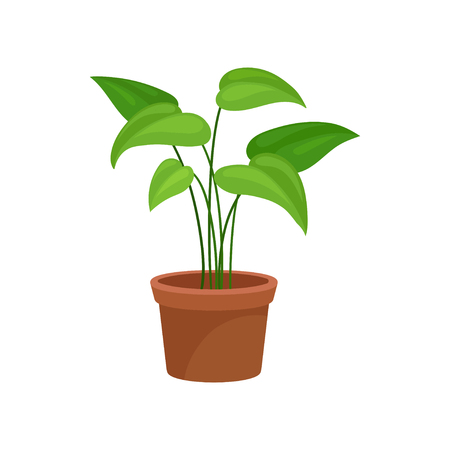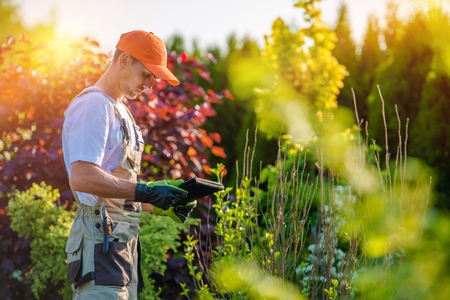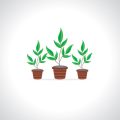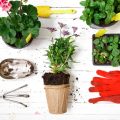1. Overwatering and Underwatering
Many new plant parents misjudge how much water their green friends actually need. It’s easy to assume that more water equals a healthier plant, but both overwatering and underwatering can lead to stressed or dying plants.
How to Tell If Youre Overwatering
Overwatering is one of the most common reasons houseplants die. When a plant gets too much water, its roots can’t breathe, leading to root rot and other problems.
Signs of Overwatering:
- Yellowing leaves that feel soft or mushy
- Mold or fungus on the soil surface
- A foul smell coming from the soil
- Wilting despite wet soil
How to Tell If Youre Underwatering
On the flip side, underwatering means your plant isn’t getting enough moisture to survive. This usually happens when people forget to water regularly or think the plant needs less than it actually does.
Signs of Underwatering:
- Crispy, dry leaves—often brown at the edges
- Soil pulling away from the edges of the pot
- Drooping stems and leaves
- Slow growth or leaf drop
Finding the Right Watering Routine
The key is balance. Not all plants have the same watering needs, so it helps to understand what your specific plant prefers. Here’s a general guide for some popular houseplants:
| Plant Type | Watering Frequency | Watering Tip |
|---|---|---|
| Pothos | Every 1–2 weeks | Let soil dry out between waterings |
| Snake Plant | Every 2–3 weeks | Tolerates drought better than overwatering |
| Peace Lily | Weekly | Keep soil consistently moist, not soggy |
| Cactus/Succulents | Every 2–4 weeks | Water deeply, but infrequently; allow full drying between waterings |
A good rule of thumb is to check the top inch of soil before watering. If it feels dry, it’s usually time to give your plant a drink. And always make sure your pot has drainage holes!
2. Not Enough Light—or Too Much
One of the most common reasons plants struggle or die is improper lighting. Many beginners underestimate how important light is—or they place their plants where light conditions don’t match their needs. Understanding the lighting in your home and how it affects different types of plants is key to keeping them healthy.
Know Your Plant’s Light Requirements
Different plants have different lighting needs. Some thrive in bright, direct sunlight, while others prefer low-light or indirect light. Heres a quick guide to help you identify what your plant might need:
| Light Level | Description | Common Plants |
|---|---|---|
| Low Light | Little to no direct sunlight; typically found in rooms with north-facing windows or spaces far from windows. | Snake Plant, ZZ Plant, Pothos |
| Medium/Indirect Light | Bright but filtered light; near east- or west-facing windows with sheer curtains. | Peace Lily, Spider Plant, Philodendron |
| Bright/Direct Light | Several hours of direct sun per day; usually close to south-facing windows. | Cactus, Succulents, Fiddle Leaf Fig |
How to Read Natural Lighting in Your Home
The direction your windows face plays a big role in the type of light your plants receive:
- North-facing: Low light most of the day. Good for low-light plants.
- East-facing: Bright morning sun and indirect light for the rest of the day. Great for many houseplants.
- South-facing: Offers the most consistent and intense light—ideal for sun-loving plants.
- West-facing: Strong afternoon sun that can be harsh—suitable for medium to high-light plants.
Avoiding Common Light Mistakes
#1: Placing All Plants by the Window Isn’t Always Best
Not every plant wants direct sunlight. Some will burn or dry out if placed too close to a sunny window. Check each plant’s preference before choosing its spot.
#2: Ignoring Seasonal Changes
The amount and angle of sunlight change throughout the year. You might need to move your plants during winter months when days are shorter or light becomes weaker.
#3: Relying Solely on Artificial Light
If you don’t have good natural light, grow lights can help—but not all are created equal. Choose full-spectrum LED grow lights for best results and follow usage guidelines based on your plant’s needs.
Tip:
If youre unsure about your homes lighting, try using a light meter app on your phone or observe how shadows form throughout the day—sharp shadows mean strong light; soft or no shadows mean low light.
Matching your plants lighting needs with the right spot in your home can make all the difference between a thriving plant and one that constantly struggles.

3. Wrong Type of Soil
One of the most common reasons plants don’t thrive is because they’re planted in the wrong type of soil. Choosing the wrong soil can lead to poor drainage, lack of nutrients, or even root rot. Different plants have different needs, and using a one-size-fits-all approach to soil just doesn’t work.
Why Soil Type Matters
Soil isn’t just “dirt.” It’s a complex mix of minerals, organic matter, air, and water—and different plants need different balances of these elements to grow properly. For example, succulents need fast-draining soil to prevent root rot, while ferns prefer rich, moisture-retaining soil. When you use the wrong type, your plant may struggle to absorb water or nutrients, or it may hold too much moisture and develop fungal issues.
Common Soil Types and Their Best Uses
| Soil Type | Description | Best For |
|---|---|---|
| Potting Mix | Lightweight, well-aerated; often includes peat moss, perlite, and compost | Most indoor houseplants like pothos, philodendrons, and peace lilies |
| Cactus & Succulent Mix | Fast-draining with sand or grit added | Cacti, succulents, aloe vera |
| Orchid Bark Mix | Chunky bark-based medium that drains well but retains some moisture | Orchids and other epiphytic plants |
| Garden Soil | Heavier than potting mix; may contain clay and organic material | Outdoor garden beds (not recommended for containers) |
| Seed Starting Mix | Fine-textured and lightweight; designed for seed germination | Starting seeds indoors or in trays |
How to Choose the Right Soil for Your Plant
The easiest way to choose the right soil is to check your plant’s label or look up its care requirements online. If youre shopping at a garden center in the U.S., most bagged soils will clearly state what theyre intended for—whether its “indoor plants,” “succulents,” or “vegetable gardens.” Don’t be afraid to ask staff for help if youre unsure.
Pro Tip:
If your plant came in a nursery pot with generic soil, it might not be ideal long-term. Consider repotting with the appropriate mix after bringing it home.
Avoid These Beginner Mistakes:
- Using garden soil in pots—it’s too dense and can suffocate roots.
- Planting succulents in regular potting mix—they need more drainage.
- Skipping repotting when soil becomes compacted or depleted.
The bottom line: matching your plant with the right soil gives it a solid foundation—literally—to grow healthy and strong.
4. Skipping Fertilizer or Using the Wrong Kind
If your plants are looking weak or not growing as expected, it might be because they’re not getting the nutrients they need. While soil provides a base, it doesn’t always have enough of the essential elements to keep your plants healthy—especially if youre using potting mix or older garden soil.
Why Fertilizer Matters
Plants need a balance of nutrients like nitrogen (N), phosphorus (P), and potassium (K) to thrive. These are often labeled on fertilizer packages as N-P-K numbers. Without these, your plant may show signs of stress such as yellowing leaves, stunted growth, or fewer blooms.
Choosing the Right Fertilizer
Not all fertilizers are created equal. Some are made for leafy plants, others for flowering ones, and some are slow-release while others act quickly. Picking the right type for your plant is key.
| Plant Type | Recommended Fertilizer | Application Frequency |
|---|---|---|
| Leafy Green Plants (e.g., pothos, ferns) | High-nitrogen fertilizer (e.g., 10-5-5) | Every 4–6 weeks during growing season |
| Flowering Plants (e.g., roses, petunias) | Balanced or bloom booster (e.g., 10-10-10 or 5-10-5) | Every 2–4 weeks in spring and summer |
| Cactus & Succulents | Diluted low-nitrogen fertilizer (e.g., 2-7-7) | Every 2–3 months in active growth |
Avoid Over-Fertilizing
More isnt always better. Overdoing it can burn your plant’s roots and lead to salt buildup in the soil. Signs of over-fertilization include brown leaf tips, crusty white residue on soil surface, and wilting despite adequate watering.
Tips to Fertilize Wisely:
- Read the label: Follow dosage instructions carefully.
- Dilute when unsure: It’s safer to underfeed than overfeed.
- Water before fertilizing: This helps prevent root burn.
- Skip fertilizing in winter: Most houseplants go dormant and don’t need extra nutrients during colder months.
The right kind of fertilizer at the right time makes all the difference. Once you get into a routine that fits your specific plants needs, youll start seeing healthier foliage and better overall growth.
5. Ignoring Pests and Disease Symptoms
One of the most common reasons new plant parents lose their greenery is because they miss the early signs of pests or disease. Its easy to assume a few brown spots or yellowing leaves are just part of the plants normal cycle, but these could be red flags that something more serious is going on.
How to Spot Trouble Early
Healthy plants should have vibrant leaves, steady growth, and no visible damage. If you notice anything unusual, like sticky residue, small holes in leaves, or a sudden color change, its time to take a closer look. Heres what to watch for:
| Warning Sign | Possible Cause | What To Do |
|---|---|---|
| Yellow or discolored leaves | Overwatering, nutrient deficiency, or pest damage | Check soil moisture and inspect for bugs underneath the leaves |
| Brown spots with yellow halos | Fungal infection (e.g., leaf spot) | Remove affected leaves and avoid getting water on foliage |
| Tiny webs or white dots | Spider mites or mealybugs | Wipe leaves with soapy water or use insecticidal spray |
| Sticky substance on leaves or surfaces | Aphids or scale insects secreting honeydew | Rinse plant thoroughly and treat with neem oil or insecticidal soap |
Preventing Pest and Disease Problems
The best way to protect your plants is to be proactive. Regularly inspect your plants—especially under the leaves and around the base—for any strange signs. Keep them clean by wiping down foliage with a damp cloth every couple of weeks. Also, avoid overcrowding your plants; good airflow helps prevent many fungal diseases.
Helpful Tips:
- Quarantine new plants: Keep new additions separate for a week or two to ensure they’re pest-free before placing them near other plants.
- Avoid overwatering: Damp conditions are ideal for mold and fungus growth.
- Use clean tools: Always disinfect scissors or pruning shears to prevent spreading disease between plants.
Remember:
If you catch problems early, most pests and diseases can be managed easily without harming your plant. The key is staying observant and acting quickly when something looks off.


